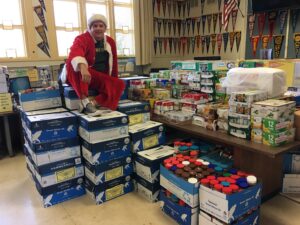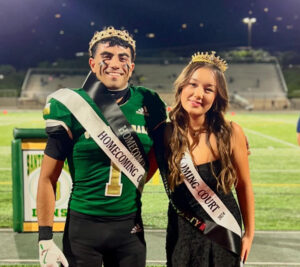The Chumash tradition of prescribed burns was just reintroduced in Santa Barbara for the first time in over 200 years. The burn took place in the first week of October, signifying the tradition of burning land for plant and seed growth, and improved hunting conditions.
The burn took place at UCSB’s North Campus Open Space, a continuous land restoration project in Santa Barbara. Dr. Stratton, the Director of Ecosystem Management for UCSB, along with her team determined they could help restore and improve 14 acres of grassland in this space by burning the land. They found it was necessary to bring Chumash community members on for the project since this practice was traditionally done by the Chumash. “We just felt like this is an amazing opportunity to bring back this cultural practice and use it as a tool for part of the long term relationship with the land,” she explained.
The fire was lit by Barbareño Chumash Elder Ernestine Ygnacio-De Soto. The goal of the controlled burn was to reintroduce native wildflowers in the area, such as Coyote’s Eyes, a flower that was commonly used in Chumash burial sites. Prior to the burn, the area was planted with numerous native wildflowers and plants in hopes that the scorching would spread the species around the area. Nutrients from the burned material would enrich the soil, allowing the new seed to sprout fruitfully. Controlled burning also reduces fire risk and helps get rid of invasive grasses on the land that can choke out the biodiversity. Although the burn came with great cultural significance, it also had valuable scientific implications. Dr. Stratton described this as “burning in a new context.” This area now acts as a “living laboratory” to survey the effects. This includes potential subset burns every year to gain even more data to study and improve the method.
Dr. Stratton sees this as the beginning of a long journey, “The outcome of this burn can inform work in other places.” An example she shared is cattle grazed areas up in the hills of California with rich seed banks waiting to be brought out with controlled burns. “If this practice is expanded to other areas, you could see amazing wildflower displays and different things come out from regular land.”
Dr. Stratton believes we can continue to honor the Chumash’s relationship with this land by, “Recognizing and honoring the fact that they did manage these lands for thousands of years…They had this role of interacting with the land on a regular basis, and did so for the purpose of diversity and plants that were important to them.” Stratton hopes to continue to build opportunities for the Chumash to partake in cultural traditions, and set an example for more cultural burns in the future in other areas of California. The project’s response was overwhelmingly positive from both scientific and native communities.
Grassland burning at North Campus Open Space [Image Credit: Matt Perko, UC Santa Barbara]






Be First to Comment